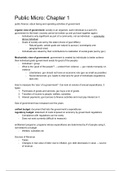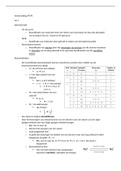Samenvatting
IBEB Applied Microeconomics Summary & Formulasheet (Grade 9.6)
- Vak
- Instelling
- Boek
IBEB Applied Microeconomics Summary & Formulasheet. With this summary, you have everything you need to succeed in this course (FEB12001X / FEB12001)
[Meer zien]





